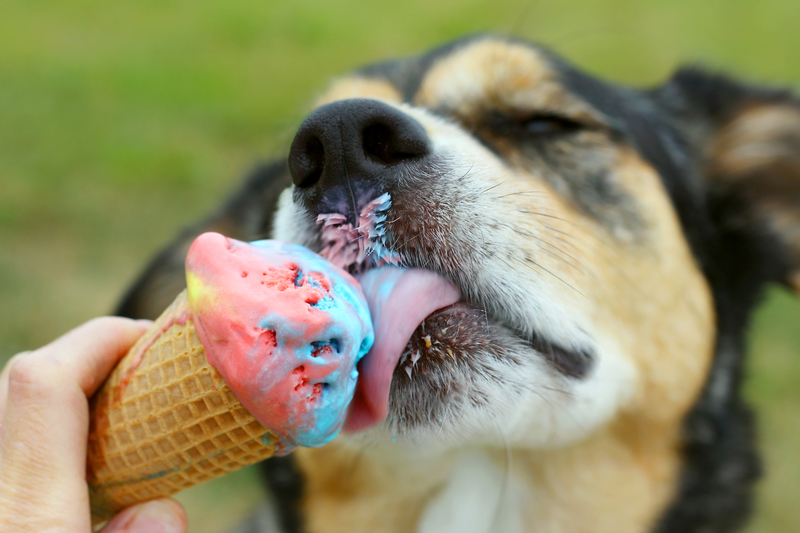Most of us try our best to only feed our dogs quality dog food and other foods that we know are okay for them. However, sometimes a food might contain an ingredient that we don't know could be very bad for our beloved dog.
When you find out what this ingredient is and the foods it may be in, it may change the food items that you give your dog forever. When you know what can happen to them, you might be horrified!
The Ingredient That Can Be Harmful To Your Dog Is:
Xylitol is used to sweeten a wide range of products, including sugar-free gum and mints, nicotine gum, chewable vitamins, certain prescription drugs, dental hygiene products and baked goods and is highly toxic to dogs.
Xylitol can also be purchased in granulated form as a sugar replacement to sweeten beverages, cereals and other foods.
Xylitol poisoning in dogs is reaching epidemic proportions according to some sources. The sweetener is being used in an ever growing list of products because it's as sweet as sucrose, but with only two-thirds the calories of sugar.
It's less expensive than other sugar substitutes, tastes better and causes little if any insulin release in humans.
Just a few years ago, xylitol could be found in less than a hundred products in the U.S., primarily limited to sugar-free gums, candy and foods. Today it can be found in a wide range of health and beauty products, food products, over-the-counter drugs and supplements and prescription medications.
Until fairly recently, xylitol was found primarily in products not normally given to dogs.
However, xylitol is now being found in certain peanut and nut butters.
Peanut and Nut Butters Containing Xylitol
Dr. Jason Nicholas, who runs Preventive Vet, has compiled a list of nut butters containing xylitol:1
Go Nuts, Co.
Almond ButterAlmond Butter – Chocolate Almond Butter
Peanut Butter – Dark Chocolate Mint
Peanut Butter – Natural Chocolate Flavor
Peanut Butter – Natural Flavor
Peanut Butter – Organic Maple Flavor
Krush Nutrition
Nutty By Nature Peanut Butter Brownie BatterNutty By Nature Peanut Butter Cookie Dough
Nutty By Nature Peanut Butter Snickerdoodle Cookie
Nutty By Nature Peanut Butter Thick & Creamy
Nuts ‘N More®
Almond Spread – Almond ButterHigh Protein + Almond Spread – Almond Butter
High Protein + Almond Spread – Chocolate Almond
High Protein + Almond Spread – Cinnamon Raisin
High Protein + Peanut Spread – Chocolate Peanut
High Protein + Peanut Spread – Peanut Butter Flavor
High Protein + Peanut Spread – Pumpkin Spice
High Protein + Peanut Spread – Toffee Crunch
Peanut & Protein Spread – Sesame Cranbutter
Peanut Spread – Peanut Butter Flavor
Peanut Spread – Toffee Crunch
P28 Foods
High Protein Spread – Almond ButterHigh Protein Spread – Banana Raisin
High Protein Spread – Peanut Spread
High Protein Spread – Signature Blend
Protein Plus PB
Hank's Protein Plus – Almond ButterHank's Protein Plus – Banana
Hank's Protein Plus – Caramel Pretzel
Hank's Protein Plus – Chocolate Chip
Hank's Protein Plus – Coconut
Hank's Protein Plus – Honey Maple
Hank's Protein Plus – Plain
Hank's Protein Plus – Snickerdoodle
These are specialty nut butters sold primarily in nutrition stores and online, but the fact that xylitol is now being used in these products is a heads-up for dog parents everywhere of the importance of reading ingredient labels.In some cases, you might be able to use the placement of xylitol on an ingredient list to estimate how much is in the product. In the U.S., ingredient lists for foods must be organized in descending order based on weight. The ingredient weighing the most is at the top of the list.
Symptoms of xylitol intoxication in dogs include vomiting, weakness, lethargy, loss of coordination, seizures and collapse. Hypoglycemia is usually evident within an hour or two after a dog ingests xylitol, but symptoms are occasionally delayed for several hours.
Treatment depends on how quickly it is given. Vomiting is induced in cases where the xylitol has just been ingested. Once a dog develops hypoglycemia, IV dextrose must be administered until the animal can self-regulate his blood glucose concentrations, which typically takes from 12 to 48 hours.
In dogs who ingest enough xylitol to cause liver toxicity, liver enzymes must be closely monitored.
As you can see, xylitol is found in many foods and other products and can be extremely harmful to dogs. This is why it is a good idea to read the labels on any foods that you plan to give your dog to make sure it doesn't contain this ingredient.
Since dogs love peanut butter, you should especially check the brand you have for this ingredient. If your dog happens to eat something with xylitol in it, you should take them to the vet as soon as possible. This will help you keep your dog as safe as they can be.
To find out more about xylitol, you can go to Healthy Pets.










Angel Hayes
- Edit
This made my day